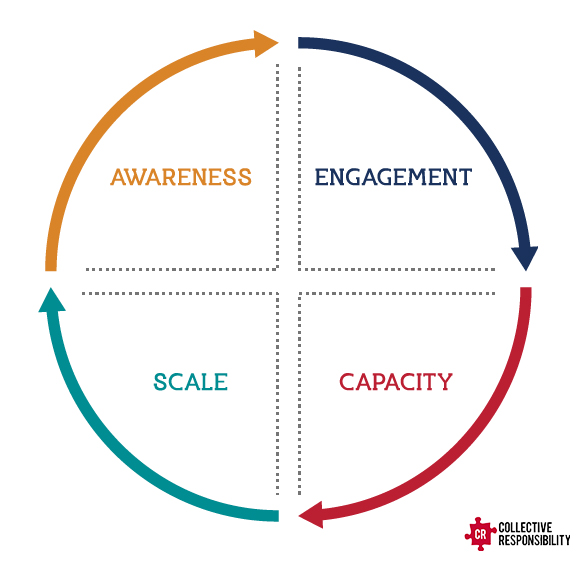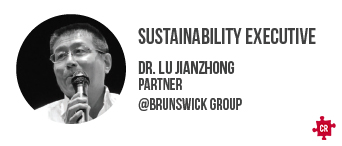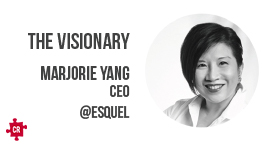Someone has to get the ball rolling.

Any and all progressive change requires intentional action from human beings, especially in terms of maximizing efficiency and sustainability in your firm’s operations. Now is no time to be passive, and this is the exact value of the sustainability ambassador — inspired individuals at all levels of leadership and influence who can pioneer your firm’s future as a sustainability leader.
As we at Collective continue to share our insights and strategies for firms to assemble and support sustainability ambassador networks, we want to now highlight the people who will make it all happen: your employee base.
Simply put, before a firm can champion sustainability, it must first champion and harness the value of its employees — the ones who will get the ball rolling. With that in mind, we’ve identified and outlined four main archetypes of sustainability ambassadors among your employee base, highlighting their motivations, capacity, and limitations to influencing lasting, innovative change for your firm.
Ask yourself: which role in a firm fits you the best?
 THE NEW ENTRANT
THE NEW ENTRANT
Motivations
The New Entrant wants to work for a “good” brand that aligns with their values and sees the firm as a medium to build relevant experience and drive change. They are always looking for ways to participate in initiatives, show their capabilities to others, and gain access to leadership. They are energized by what can be accomplished and want to start making a difference immediately.
Capacity for Change
As part of the ambassador network, the New Entrant exudes the energy that drives bottom-up change and are often relied upon to “do the work” in a larger group. As an organizer, they will have the time and passion to continue engaging willing partners, but they may struggle to engage uninterested stakeholders, especially senior management. Additionally, efforts, budgets, and size of impact made might be constrained by the fact that the New Entrant already has a “job” they are being paid to do.
 THE PASSIONATE PROFESSIONAL
THE PASSIONATE PROFESSIONAL
Motivations
The Passionate Professional is motivated by the personal tangibility presented by an issue they are trying to solve. They are aware of how the business operates and the constraints it poses, but they have not lost their aspirations for real change. As an insider, they have gained a measure of seniority, which makes them feel confident in taking on challenges.
Capacity for Change
They can be limited if their position within the firm is reduced to the label of “greenie”, or if current responsibilities are seen as non-core. In order to convince superiors that actions are worthwhile, leveraging networks of peers and building coalitions is key to gain traction. Additionally, Passionate Professionals who seek to build bridges are challenged by departmental friction they cannot unilaterally change and budgets they cannot control. Current job constraints like time and job expectations are a limiting factor as well, but their determination and stamina bring them success.
THE SUSTAINABILITY EXECUTIVE
Motivations
The job and motivation for the Sustainability Executive is to cultivate a culture that aligns with the organization’s sustainability vision. They are motivators and mentors who inspire and guide other ambassadors in the work they do. They are regularly measured by their progress and therefore need to show the success of the ambassador network program.
Capacity for Change
The Sustainability Executive is the firm’s knowledge base and facilitator — they understand the issues well and are able to develop cross-department relationships. As a result, they have experience and influence within the business unit and support from executive and even global teams. They sit from a position that is able to see high-level objectives as well as the details needed for the vision to be realized. However, without fellow executives’ support, programs may appear tacked-on instead of intertwined within the company’s “big picture” strategy, especially during undesirable economic conditions.
 THE VISIONARY
THE VISIONARY
Motivations
The Visionary sees creating restorative organizations as the new business model and sees their personal legacy attached to the change that can be affected by this model. The changes they envision are at the systems level, both now and into the future, so they are motivated to engage lower ranks who will eventually replace them.
Capacity for Change
As an industry leader, the Visionary has a high capacity for change both within the firm and outside the firm, particularly in good economic times. They have an ability to make decisions, delegate responsibility, and manage and measure others who are carrying out the work. However, the Visionary may be limited by a lack of detailed knowledge or recent “hands-on” experience at ground-level operations. Challenges can emerge when internally engaging others on issues and catalyzing behavioral changes or externally attempting to sway the Board of Directors or investors who have yet to be sold on the sustainability vision.
For more tips to anticipate and overcome these obstacles while maximizing your ambassadors’ potential, check out our other blog post introducing 6 tips for building a sustainability ambassador network. And for more profiles and strategy for on helping your firm become a sustainability leader, check out Collective’s recent report on “Building a Sustainability Ambassador Network.“
Follow us on social media to receive regular updates on upcoming articles, reports, events, and more.
This article was written by Gabrielle Williams, Research Analyst at Collective Responsibility.
